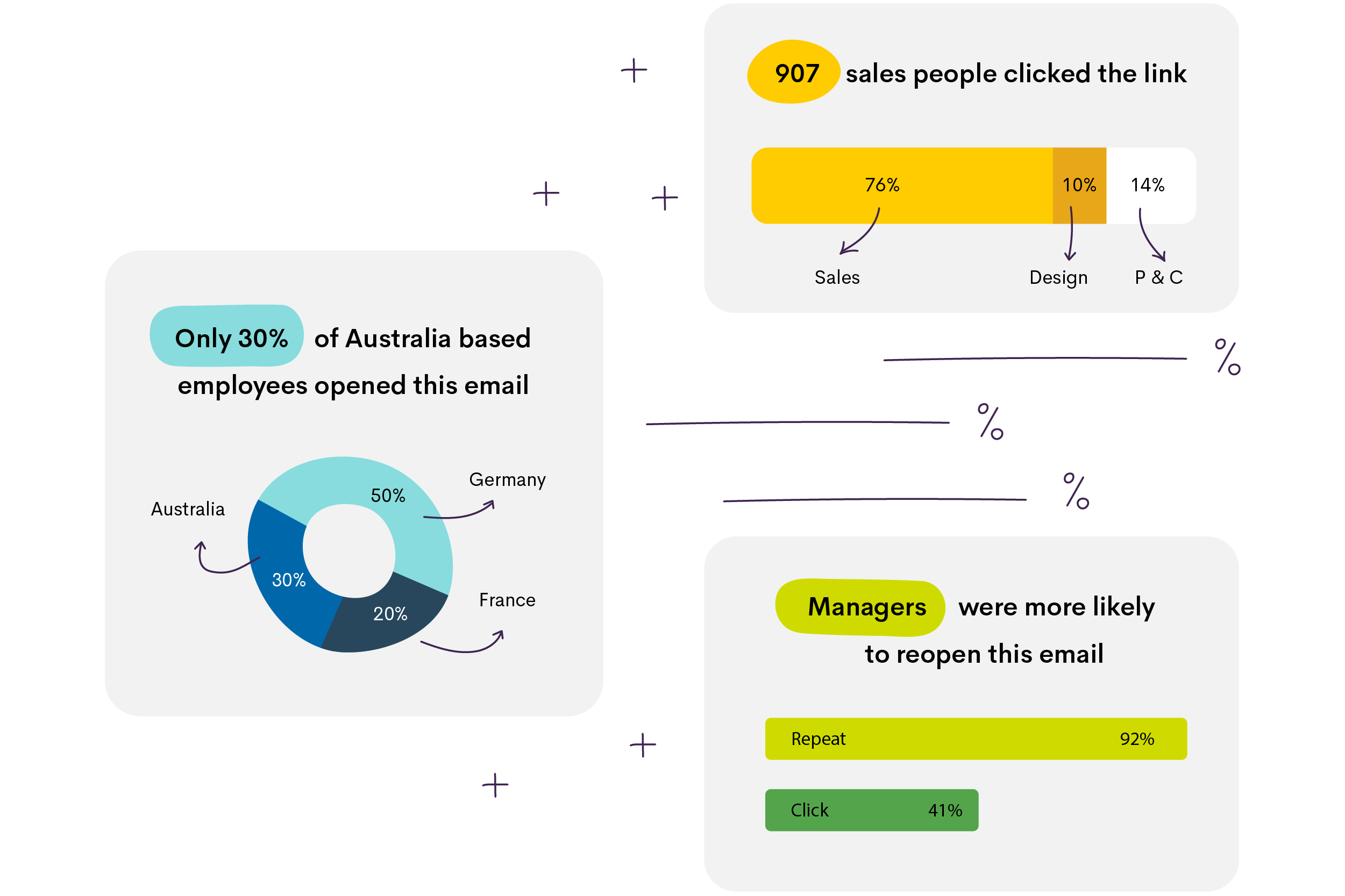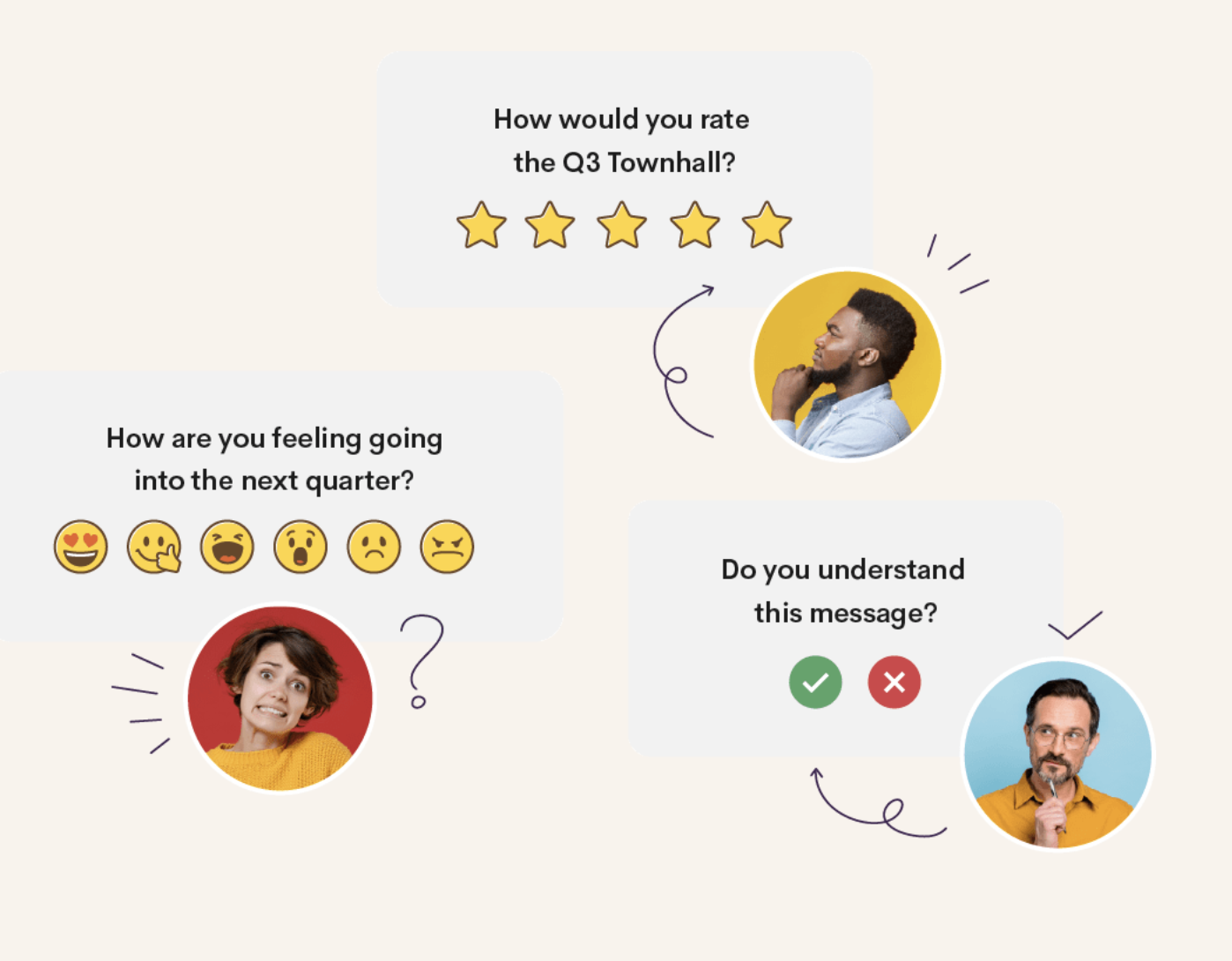You’re focused, deep into your work.
Then, you hear it.
The all too familiar *ping* of your inbox.
You switch tabs and see that little red icon: “New message! Read me!”
You mull it over for a second… and decide that you have time to reply right now.
It won’t take much effort, right? It’s another item to check off your to-do list.
Then you get another email.
And another.
And another.

If your heart rate went up just reading that scenario, you’re not alone.
The average American worker spends five hours a day reading emails—which means they only spend three hours a day doing their actual job.
And in some work environments, employees check email, on average, over seventy-seven times per day.
How is this workflow sustainable?
Well, it’s not.
It’s a problem so pervasive that it has a name: email overload.
Email overload—the increasing abundance of email and the workplace pressure to constantly be responsive—is having a negative impact on employee productivity, mental wellbeing, and physical health.
And, unfortunately, it’s projected to get worse.
That’s because email volume is actually expected to increase in the next four years.
In 2020, approximately 306.4 billion emails were sent and received each day. By 2025, this figure is expected to increase to over 376.4 billion emails.
Ooph.
How did we get into this mess?
And where does internal communications fit into all of this?
The role of internal communications in email overload
As an internal communicator, you’re in a difficult position.
Most of the time, you don’t have a choice but to send a lot of internal emails.
It’s the most preferred, most accessible, most used internal communications channel ever.
And because of that, it’s easy for internal email sending to get out of control.
We know we’re preaching to the choir here, but you’ve probably already noticed that folks with power and influence in your organization (leadership, department heads, executives, and other stakeholders) seem to want an email for everything.
Again, they recognize that email is a great channel—it’s accessible, has great reach, and is usually pretty straightforward to use compared to other channels.
But, it’s a lot. You’ve likely wondered if all that email you’re sending is making your email strategy less effective on the whole, annoying and distracting employees, or really worth the work that it takes.
Unfortunately, it often feels like more trouble than it’s worth to attempt to convince them that email isn’t the best channel for their message or that they don’t need a separate email for every single message.
But we’re here to show that you can do this.
You can put together a compelling business case to send fewer employee emails. And in the end, leadership, employees, and you will be better off for it.
Here are the three things you need to do to convince leadership to tackle this problem head-on:
1. Use research to prove that while internal email is powerful—less is more
As you start to flesh out your case for sending less internal email, keep in mind that industry research is on your side.
In a 2019 survey from Symphony Communications, 69 percent of employees surveyed said that out of all the communication channels at work, email made them feel the most overwhelmed.
Findings like these have led researchers to recommend that organizations cut down on email traffic to improve the health and wellbeing of their employees.
Let’s clear the air here: internal email isn’t inherently bad.
It just needs to be more purposeful.
When used properly, email is still a really effective communication channel—especially for internal comms.
According to Gallagher’s 2021 State of the Sector report (the definitive global report for internal comms), email announcements remain the main channels used by organizations to share corporate messages.
That’s because most people have an email address—it’s a standard form of communication. Email also doesn’t require VPN or workplace access, so messages can reach employees wherever they are.
Further, the internal email tools available have become awesome, making it easier for internal communicators to design, target, and measure the messages they send. That helps free IC pros’ valuable time and allows them to make more strategic decisions.
But sending too much internal email can have an adverse effect.
Right now, internal communicators are spending too much time sending internal email—and it’s reducing the effectiveness of their communications. It’s also negatively affecting their sending reputation, with more and more employees disinterested or fatigued from too much email.
Independent research from Atos Origin highlighted that the average employee spends 40% of their working week dealing with internal emails that add no value to the business.
The findings conclude that: “In short, your colleagues only start working on anything of value from Wednesday each week.”
And that’s just because of internal email.
Less is more
In his book A World Without Email: Reimagining Work in An Age of Communication Overload, Cal Newport, associate professor of computer science at Georgetown University, makes the case for sending less internal email.
The underlying problem of email overload is what Newport calls “the hyperactive hive mind”: a workflow centered around ongoing conversation fueled by unstructured and unscheduled messages delivered through digital communication tools like email and instant messenger services.
In A World Without Email, Newport writes:
“If your organization depends on the hive mind, then you cannot neglect your inbox or chat channels for long without slowing down the entire operation. This constant interaction with the hive mind, however, requires that you frequently switch your attention from your work, to talking about work, then back again.
Pioneering research in psychology and neuroscience reveals that these context switches, even if brief, induce a heavy cost in terms of mental energy—reducing cognitive performance and creating a sense of exhaustion and reduced efficacy… In the long run, it’s likely reducing productivity, requiring more time and more expenses to get the same total amount of work accomplished.”
Email overload, Newport argues, is bad for both business and the soul.
Workers feel like they always have to be connected because email is always on, humming in the background, waiting for a response. That leaves employees with less productive time, more stress, and a poor work-life balance.
In light of this, Newport suggests that companies need policies and tools to reduce the negative effects of email overload.
That sounds great and all… but how do you actually make this change happen in your organization—especially if sending a ton of email is the norm?
2. Conduct an internal email audit
An internal email audit is an essential step to help you gather the evidence you need to stop email overload.
It’s a great way to get a bird’s-eye view of all of the internal emails in your organization.
That’s why we created this handy internal email audit template.
With this template, you can take note of important details like who is sending emails, the content type, and their frequency.
There’s also a section where you can analyze the quality of these emails: Is the content clear? Is it on-brand? Does it serve an explicit purpose that is not better suited elsewhere?
After you’ve answered these questions about email quantity and quality, you can then dive into data to further build your case.

If you have an awesome internal email analytics tool, you can get the insight you need to create an effective, data-backed email strategy pretty easily.
With data like open rates, click maps, and pulse surveys, you can figure out which email content is most popular, what needs improvement, and how your emails’ design may be helping or hindering engagement.
If you want more insight, you can even break down your analytics by employee segments—like department, location, or even job title.
This helps you track trends across employee segments so you can identify which content resonates with which groups, where there may be engagement issues, and how to make your communications more relevant to certain employee groups.
Once you’ve plugged in these data-driven insights into your internal email audit template, you’ll be better equipped to identify specific opportunities to consolidate messages, sunset emails that don’t perform, and demonstrate that sending ad hoc isn’t really an effective strategy.
And now that your audit is complete, it’s time to present your case for less—but more strategic—employee email.
3. Tell the story of your internal email data
Data is essential for making informed decisions.
It’s the hard evidence that can help you prove which content pieces are the most valuable—and that sending fewer internal emails does lead to an increase in engagement and efficacy.
But when presented with a bunch of numbers, it’s hard to discern what information is important, what the numbers really mean, and what decisions should be made.
Data storytelling can help you cut through the noise and show leadership what’s really important.
That’s because people remember stories better than numbers.
Without a story to relate to, people won’t understand why the data is important and are less likely to be influenced by it.
When done right, data-fueled stories grab our attention, stick with us, and influence our behavior.
For example, if your audit revealed that your employees aren’t spending enough time reading an email, or clicking through to links, you need to dig into the why.
It might be because there is too much internal email and they’ve lost interest. It could be because there just isn’t a lot of content to read. Maybe it’s because your links aren’t obvious enough.
But how can you prove which factors are at play?
One way is to dig into your analytics a little deeper, compare content, look at timing, and even cross-reference your findings with other internal data from your People and Culture team.
Another great way to figure out why the numbers say what they do is to get real feedback from your colleagues.
Pulse Surveys allow you to get insight into how employees really feel about the emails they receive.

You can track sentiment, comments, and share your results easily in a presentation for that extra wow factor.
Note: It’s important to remember that Pulse Survey feedback is not a story on its own. Just because some employees might fill out a survey doesn’t necessarily mean that they’re going to leave comments.
When you combine feedback with analytics from your audit, though, you’ll be able to see a story emerge around how internal email is received—and perceived—in your organization.
If you want to get all the deets on how to make an amazing data presentation, check out our data storytelling guide.
How to present your case for less employee email
First, present your audit findings.
Then share the stories behind the data: the feedback from your employees experiencing email overload.
Next, present your recommendations based on this data and employee feedback. How should your organization move forward? And how does the research around email overload support your recommendation to send less email?
And, finally, outline a plan to build on the momentum of your audit. Share how you’re going to measure future internal email success and lay out what you need from your stakeholders to put that plan into motion.
You can also suggest presenting your findings to different departments and collaborating on a fleshed-out internal email strategy.
If your leadership team needs more reassurance, you can even pitch a trial run of sending less email.
Dial back the internal emails sent for a week or two. Then, collect the data and compare it to the “normal” volume your employees’ experience.
When your leaders see the results, they will likely be even more motivated to make a change.
Whatever the outcome, you’ll have done your research, positioned yourself as a trusted and strategic advisor, and—yes—built a convincing business case to send less employee email.
So long, email overload
Think back to your inbox.
Now, imagine getting half of the notifications you usually receive.
No more constant pinging.
No more clutter.
You breathe a sigh of relief… because you actually have the time to read these emails.
It might even make you smile.
Say what?!
Yep. That’s the kind of inbox future you and your colleagues could have.
So go ahead. Build your case for “less is more”.
Who knows? Your leaders might even start to see the benefits for themselves.



